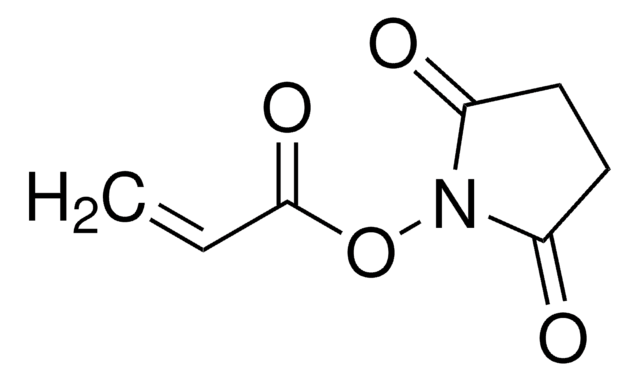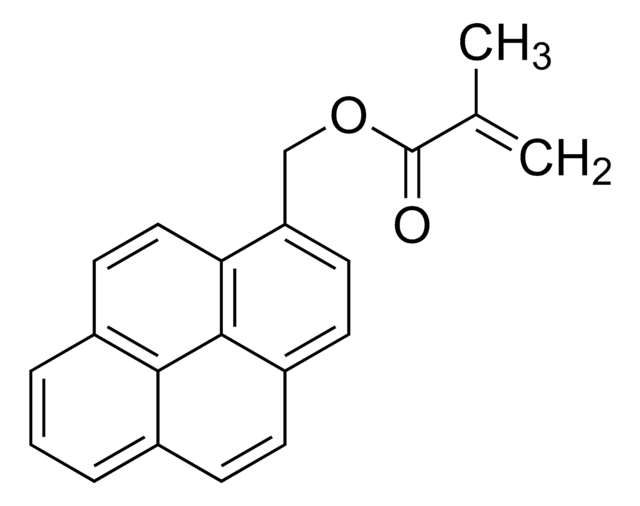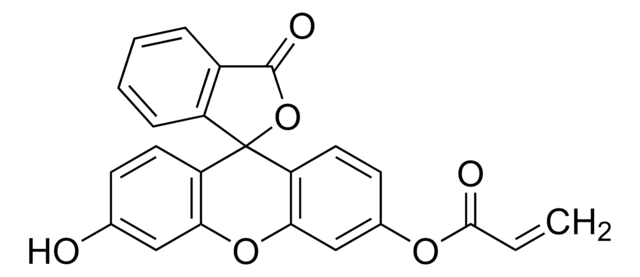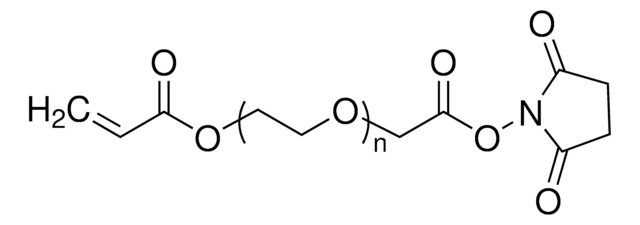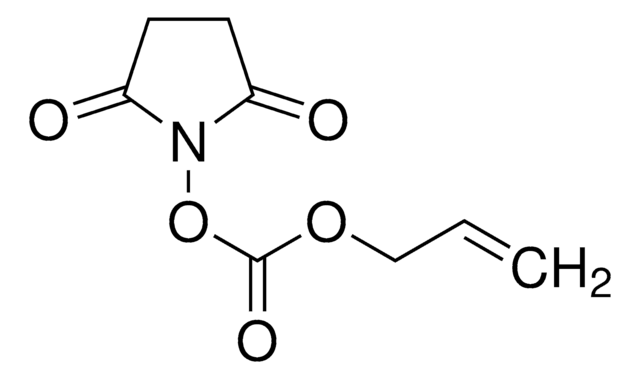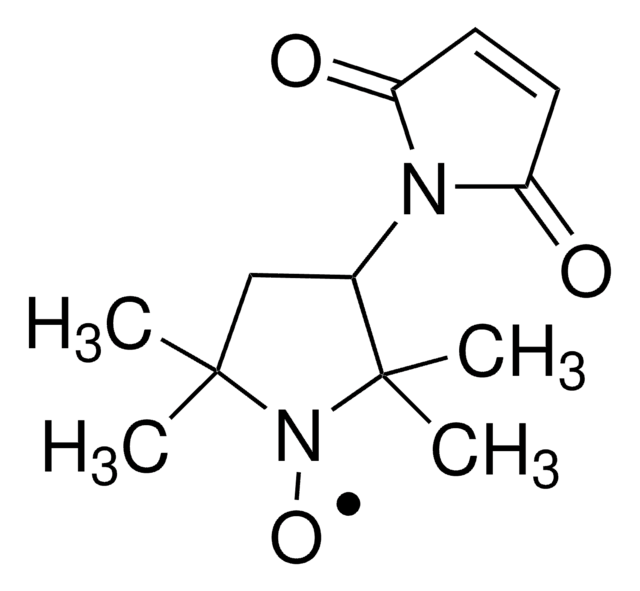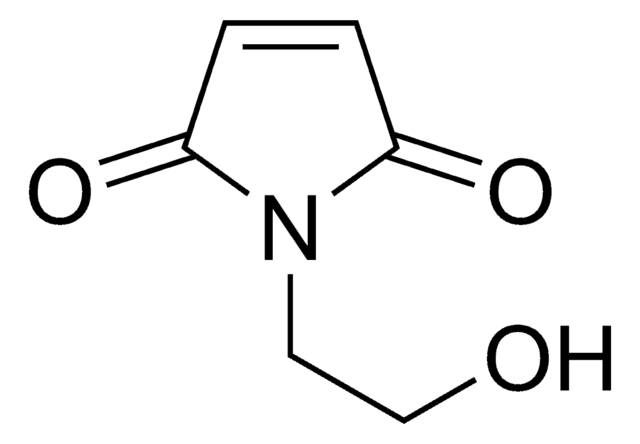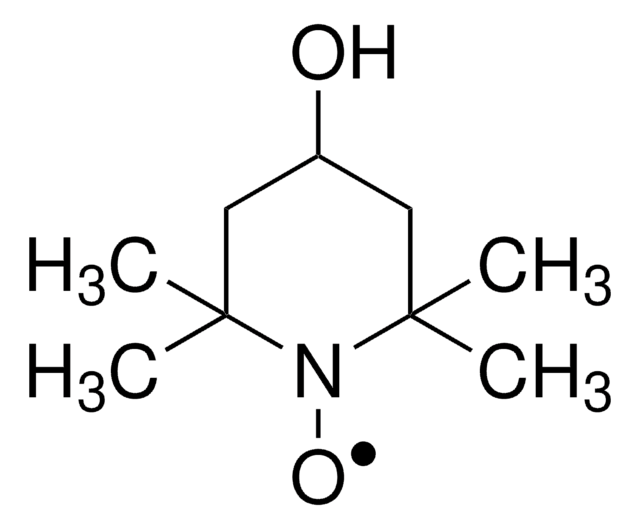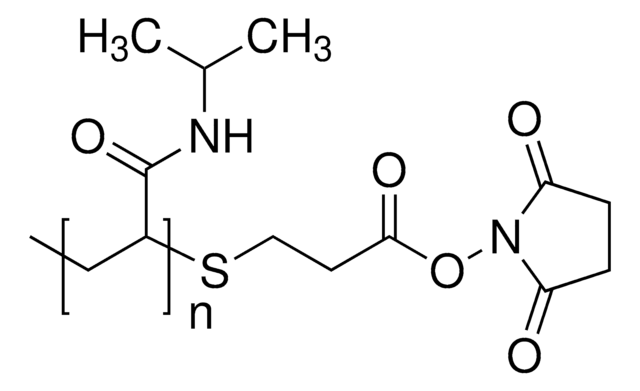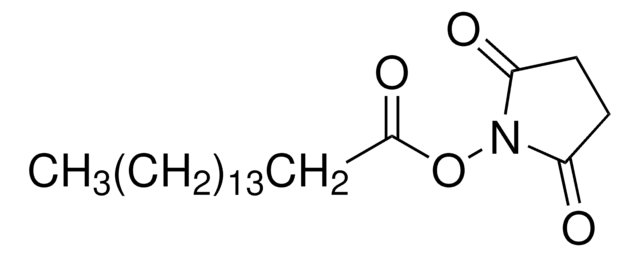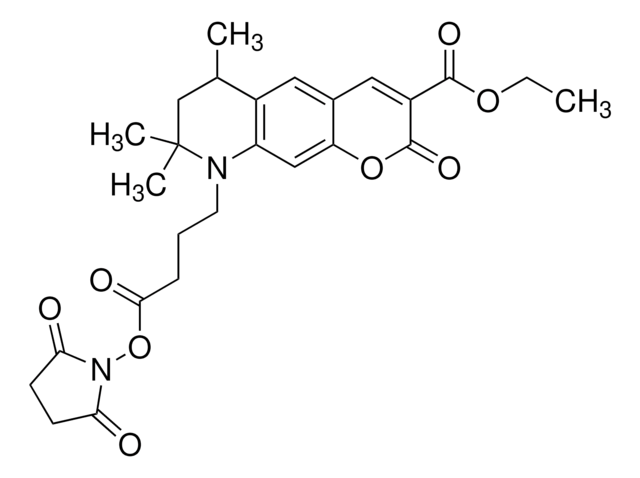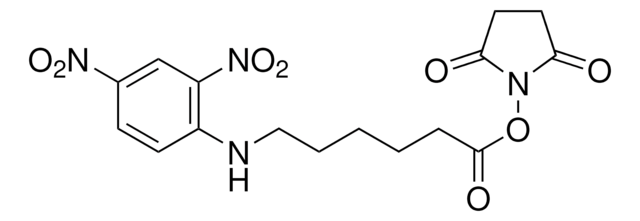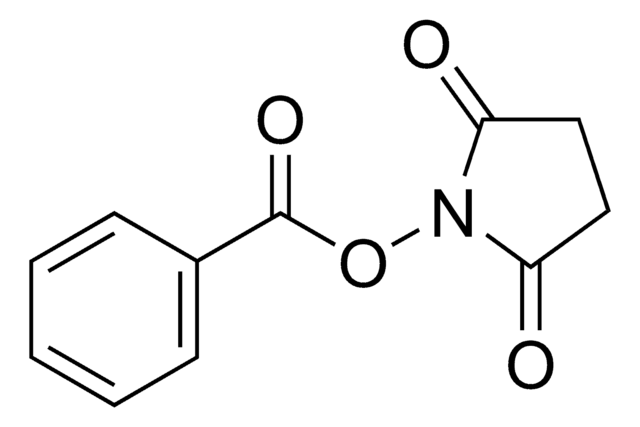730300
Methacrylic acid N-hydroxysuccinimide ester
98%
Sinonimo/i:
N-(Methacryloxy)succinimide, N-(Methacryloyloxy)succinimide
Autenticatiper visualizzare i prezzi riservati alla tua organizzazione & contrattuali
About This Item
Formula empirica (notazione di Hill):
C8H9NO4
Numero CAS:
Peso molecolare:
183.16
Numero MDL:
Codice UNSPSC:
12162002
ID PubChem:
NACRES:
NA.23
Prodotti consigliati
Saggio
98%
Stato
solid
Punto di fusione
101-105 °C
Temperatura di conservazione
2-8°C
Stringa SMILE
CC(=C)C(=O)ON1C(=O)CCC1=O
InChI
1S/C8H9NO4/c1-5(2)8(12)13-9-6(10)3-4-7(9)11/h1,3-4H2,2H3
ACGJEMXWUYWELU-UHFFFAOYSA-N
Descrizione generale
Methacrylic acid N-hydroxysuccinimide ester(NHS-MA) belongs to the class of reactive monomers known as N-hydroxysuccinimide (NHS) esters. It is commonly used for functionalizing biomolecules through amine-reactive coupling reactions infields such as bioconjugation, protein labeling, and peptide synthesis. It also serves as a crosslinking agent or linker molecule for the conjugation of drugs or targeting ligands to carrier materials.
Applicazioni
Methacrylic acid N-hydroxysuccinimide ester can be used:
- As a monomer to prepare degradable amphiphilic diblock copolymer microparticles via RAFT polymerization, for low pH-triggered drug delivery. NHS-MA can shield the drug molecule from degradation, enhance its solubility, and improve its pharmacokinetic properties.
- For the surface functionalization of poly-ε-caprolactone (PCL) scaffolds used for tissue engineering. NHS groups are used to couple with chitosan of various molecular weights.
- To prepare biocompatible polymer hydrogel for enzymatic biofuel cells. The hydrogel can serve as an enzyme-immobilizing matrix for enzymatic bioelectrodes.
Avvertenze
Warning
Indicazioni di pericolo
Classi di pericolo
Acute Tox. 4 Inhalation - Eye Irrit. 2 - Skin Irrit. 2 - Skin Sens. 1 - STOT SE 3
Organi bersaglio
Respiratory system
Codice della classe di stoccaggio
11 - Combustible Solids
Classe di pericolosità dell'acqua (WGK)
WGK 3
Punto d’infiammabilità (°F)
Not applicable
Punto d’infiammabilità (°C)
Not applicable
Scegli una delle versioni più recenti:
Possiedi già questo prodotto?
I documenti relativi ai prodotti acquistati recentemente sono disponibili nell’Archivio dei documenti.
I clienti hanno visto anche
Theato, P.
Journal of Polymer Science Part A: Polymer Chemistry, 46, 6677-6677 (2008)
Xiaolong Zhang et al.
Biomacromolecules, 17(3), 778-787 (2016-01-23)
It is important to synthesize materials to recapitulate critical functions of biological systems for a variety of applications such as tissue engineering and regenerative medicine. The purpose of this study was to synthesize a chimeric hydrogel as a promising extracellular
Myriam G Tardajos et al.
Carbohydrate polymers, 191, 127-135 (2018-04-18)
Tissue engineering (TE) approaches often employ polymer-based scaffolds to provide support with a view to the improved regeneration of damaged tissues. The aim of this research was to develop a surface modification method for introducing chitosan as an antibacterial agent
Cori K Cahoon et al.
Proceedings of the National Academy of Sciences of the United States of America, 114(33), E6857-E6866 (2017-08-02)
The synaptonemal complex (SC), a structure highly conserved from yeast to mammals, assembles between homologous chromosomes and is essential for accurate chromosome segregation at the first meiotic division. In
Huan Peng et al.
Biomacromolecules, 17(11), 3619-3631 (2016-09-20)
This paper reports a facile approach for encapsulation of enzymes in nanogels. Our approach is based on the use of reactive copolymers able to get conjugated with enzyme and build 3D colloidal networks or biohybrid nanogels. In a systematic study
Il team dei nostri ricercatori vanta grande esperienza in tutte le aree della ricerca quali Life Science, scienza dei materiali, sintesi chimica, cromatografia, discipline analitiche, ecc..
Contatta l'Assistenza Tecnica.